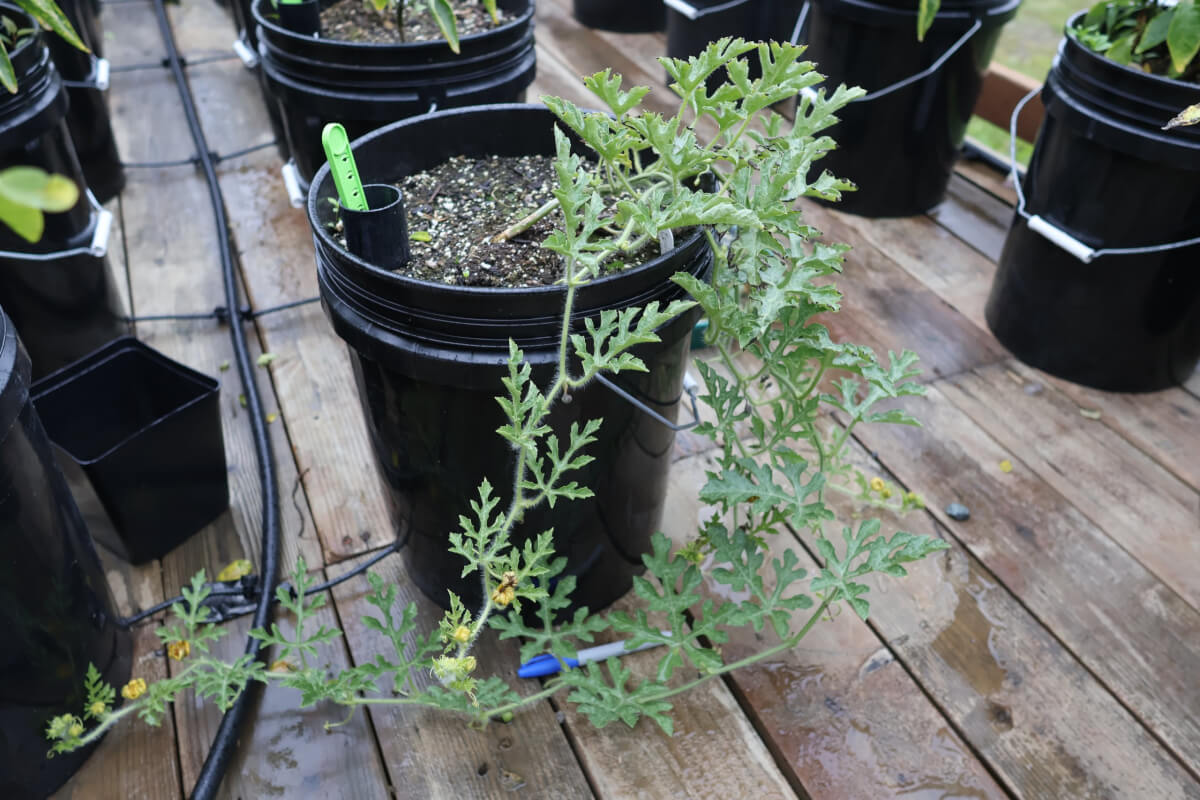Many of you know us as the “outdoor subarctic melon people.” Yeah, we cracked that code. It’s been a botanical pursuit of mine to figure out the most impossible, most “recommended against” garden plant you could possibly choose for growing outdoors at subarctic latitudes.
As we mentioned in years past, we’ve been able to get Minnesota Midgets to produce outdoors. Now, it hasn’t been a wild success, but we’ve been able to repeat it across multiple seasons now, proving it’s theoretically possible. There’s a lot of technique involved, it’s way more than planting seeds and hoping for the best.
Your average melon crop will just not produce in our cooler climate. It’s always been possible in the greenhouse, but that’s not hard…now is it? As you might imagine, we’re playing with some particularly specialized genetics to make this even remotely possible.
As with any passion, you’ve gotta change it up every now and again. We’re trialing new genetics this year, called Blacktail Mountain melon. It’s a northern developed fruit, anchoring its heritage back to the Inland Northwest US and Northern Idaho region. On paper, this melon “should” work up here, but no difficult thing is ever going to be easy.
One of the skills we’ve had to develop in this difficult pursuit is to read the plant’s response to the season. This plant was very much affected by our exceptionally cold run-up into summer this year. While this year’s melon trial was again another failure in a long line of failures, this variety has proven that it can get to suitable size when it gets the heat it needs. That can’t be said for your average outdoor melon variety.
This one has peaked our interest. Unlike the Minnesota Midget’s minute stature, these babies pack on 8 to 12 pounds when they pop off. The flowers are much more “bee accessible,” meaning we’d have a better chance of both natural and hand pollination. If it’s seasonally dependent, and it’s looking like they could be, Blacktail Mountain will see another year in our outdoor melon trials next year.
While we are years deep into this research, our efforts are going somewhere. We are slowly whittling away at “impossible” and developing a path towards “possible.”


